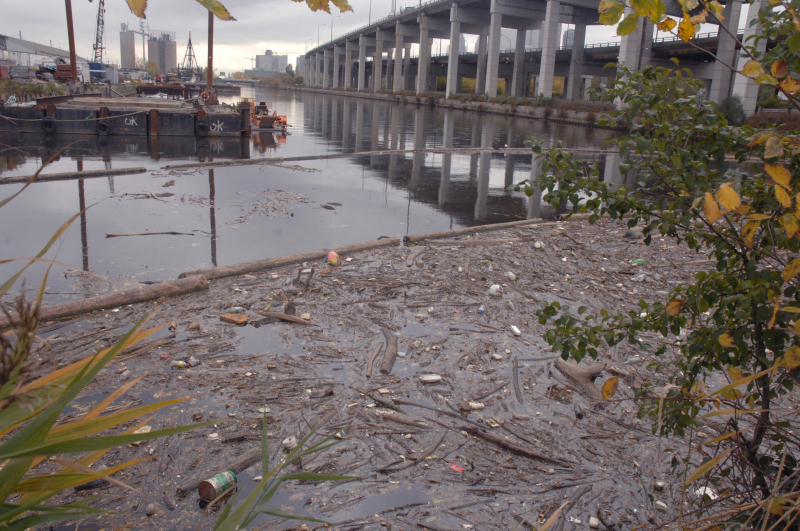Water pollution in Canada and what you need to know
For Canada Water Week, March 21 to 27, explore freshwater issues at the heart of WWF-Canada’s work.
Written by Catherine Paquette, Associate Specialist, Freshwater Health Assessments
Pollution is one of the most significant threats to aquatic ecosystems in Canada because of its presence in our lives and in our environment. To know what pollution looks like and where pollution comes from, it’s important to have a complete picture of the state of water in order to manage the risks it faces.
What is water pollution and where does it come from?
What comes to mind when you think of pollution? A big oil slick covering a pond? Plastic bottles littering shorelines? Although these are good examples, not all pollution is as visible to the naked eye. Pollution is the introduction of any substance into the environment that would not be there naturally. This includes substances like pharmaceuticals and pesticides. Most pollution comes from increasing demands on our environment, such as exploitation of our natural resources or our growing cities. WWF-Canada’s Watershed Reports look at a range of sources of pollution and the threat to aquatic ecosystems because the threat of pollution to nature is a threat to people. Pollution sources we look at are industry discharge, pipeline spills and agricultural contamination.
How does pollution affect the environment?
We’ve all seen the pictures of ducks covered in oil following spills and fish with bellies full of plastic, but pollution can have impacts on wildlife that aren’t always seen. Cadmium, a metal used in batteries, can find its way into our watersheds and can lead to fish reproduction problems. Pesticides used in agriculture can accumulate in the flesh of aquatic animals and impact their immune systems. Human pharmaceuticals which aren’t properly filtered out of waste water can have devastating impacts on fish hormones and behaviours.
What is the state of aquatic pollution in Canada?
Our Watershed Reports use data from a number of sources to piece together the threat pollution poses to Canada’s freshwater. Eight of the 11 watersheds currently assessed are classified as having high or very high pollution threat levels. High threat levels mean these particular areas and their ecosystems have an elevated risk of being polluted. These are often areas with significant development (mines, industry), large municipalities or are important agricultural areas. As threat levels vary across the country, so do the main sources of pollution, based on the NPRI (National Pollutants Release inventory). Here is the threat level for three iconic regions and some of their main pollution sources:
Pollution in the Saint John River:
Threat level: Very High
Pollution sources: pulp and paper industry, oil industry, food and agriculture, forestry.
Pollution in the Great Lakes and St. Lawrence River:
Threat level: Very High
Pollution sources: chemical, metal, plastic and paint manufacturing, the food and agriculture industry, tech companies, aerospace and automotive sectors.
Pollution in the Skeena River:
Threat Level: Low
Pollution sources: forestry and wood related manufacturing, municipalities and local airports.
What can we do?
There are plenty of actions that be taken to reduce pollution and ensure healthy ecosystems. The annual Great Canadian Shoreline Cleanup, a joint conservation initiative of the Vancouver Aquarium and WWF-Canada, is great way to help out, reducing litter on our shores and ensuring a healthy environment for all.
The Watershed Reports allow us to better understand the threats facing our freshwater by highlighting regional variations and particularities. As pollution negatively impacts freshwater quality and ecosystem health, it is important to fully understand the ‘what’ and ‘where’ of pollution. The sources and locations of pollution provide insight on areas of priorities and how best to restore and protect water for nature and water for people!



